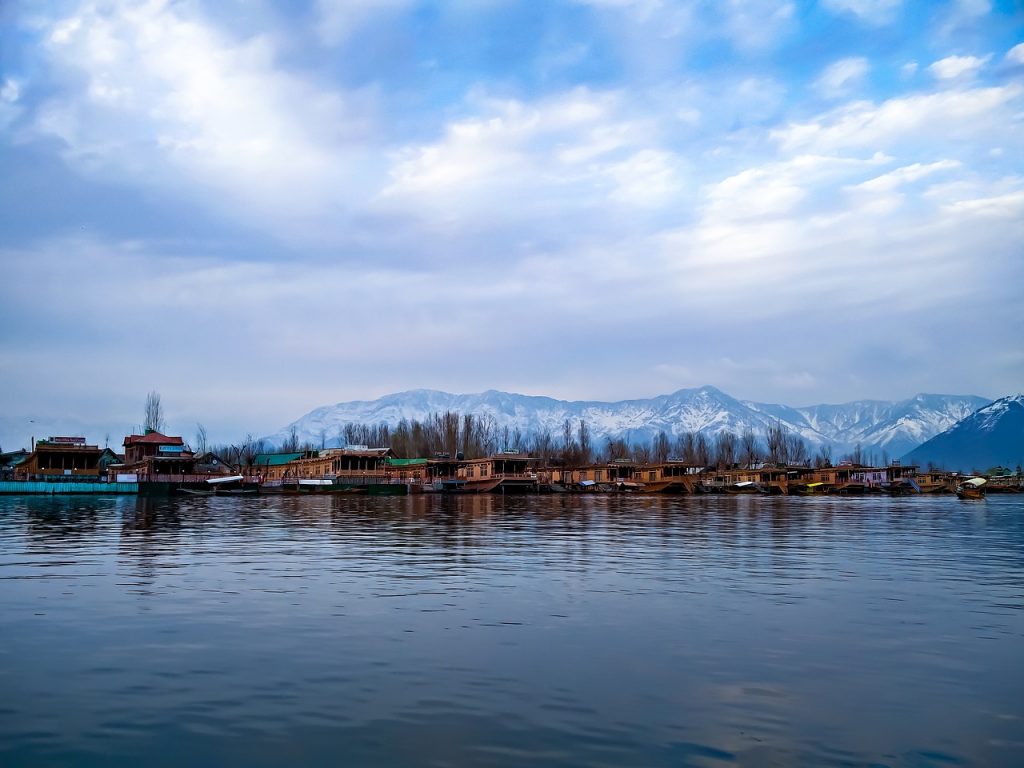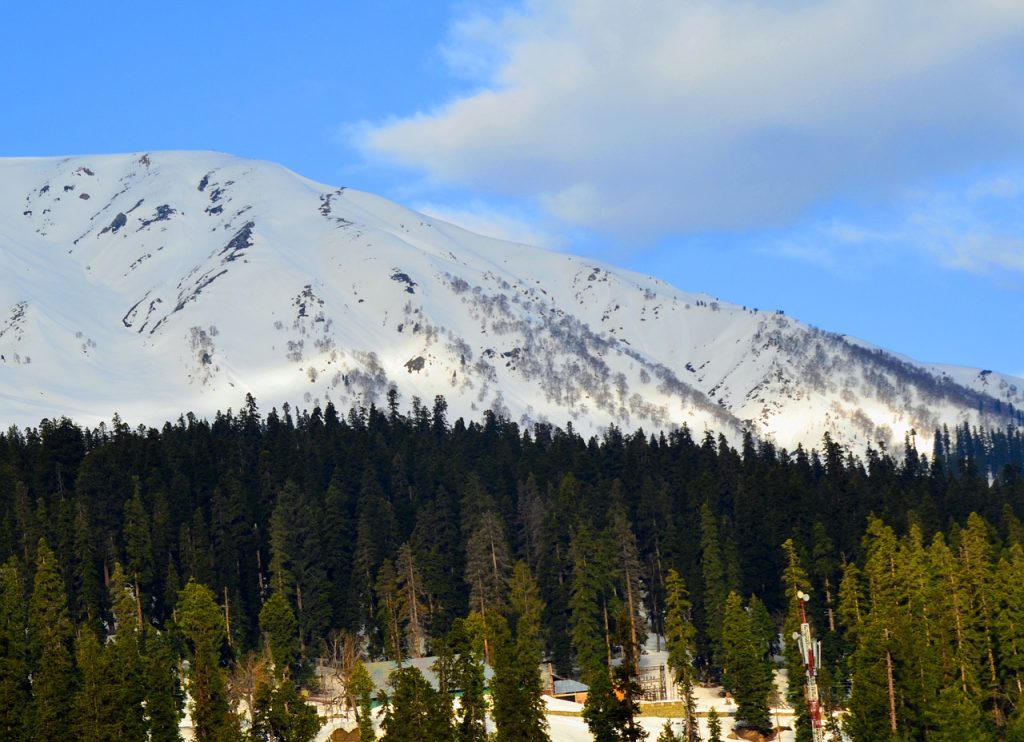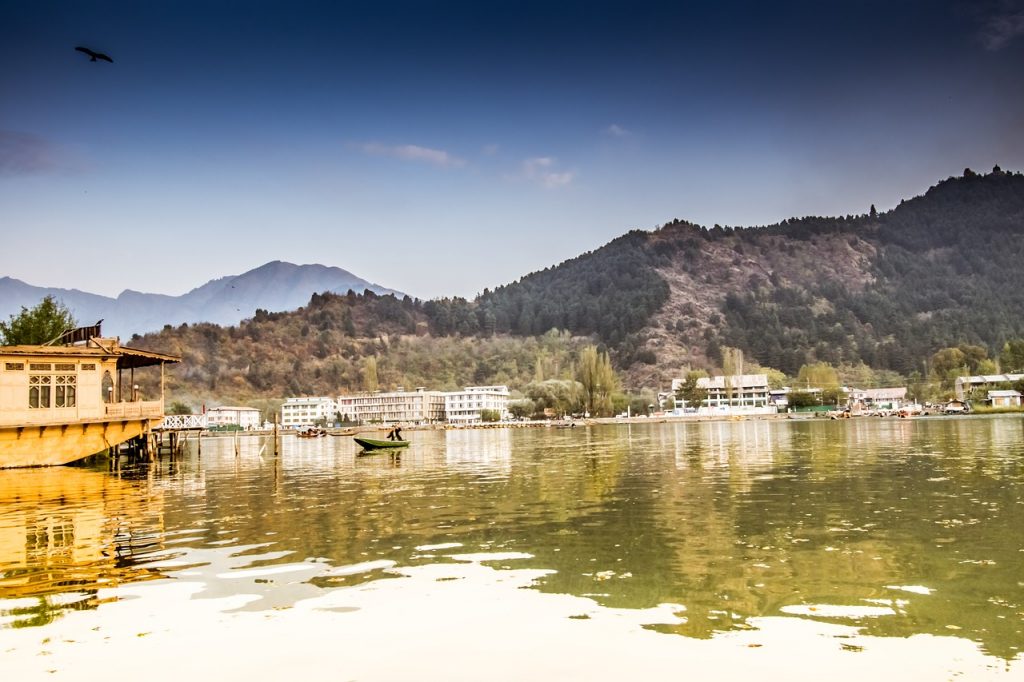Dal Lake is one of the most popular tourist destinations in Jammu and Kashmir, and one of the unique experiences here is a houseboat stay. The 15.5 kms long shoreline of Dal Lake is beautifully bordered by the Mughal era gardens, parks, hotels, and houseboats. The houseboats provide stunning views of the lake, and when in Kashmir, staying in these wonderful ‘floating houses’ is unmissable.
History of the Houseboats on Dal Lake, Srinagar
During the Dogra rule that spanned around 106 years, from 1846 to 1952, Srinagar was commissioned as the capital of the Dogra territory. The Dogra ruler (Dogra Maharaja of Kashmir) had imposed restrictions on the building of houses in the valley. However, the British found a way around this rule and arranged for the building of luxurious houseboats on the Dal Lake. These houseboats came to be known as ‘each one a little piece of England afloat on Dal’. After India attained independence, the Kashmiri Hanjis (a tribe classified as semi-nomadic, wherein people work in different trades based on seasons), built and maintained these houseboats. They created floating gardens and manufactured goods for the market. The houseboats soon turned into means of accommodation for the tourists visiting Srinagar.
There are two other stories about how houseboats were introduced in Kashmir. One story says that a shopkeeper named Pandit Naraindas set up shop on a boat near a Hanji community, after his previous shop was reduced to ashes in a fire. Since wooden buildings are prone to catching fire, he thought of having his shop on a boat. He improved this shop and later, he sold it to a European. Thus the idea of a houseboat came into existence and soon after that, gained popularity. Another story says that according to the famous British explorer Sir Francis Younghusband, a person named MT Kennard established a floating house sometime between 1883 and 1888 and that’s how the concept of a houseboat came into being.
Houseboats at Dal, Srinagar: The Present Scenario
There are over 1200 houseboats in Dal and Nagin lakes. They are similar to hotels and popular as an accommodation option among visitors. They differ in terms of the amenities and facilities they provide, and their sizes, based on which they are classified as luxury, deluxe, mid-range, and budget houseboats. Their price or the cost of staying on a houseboat on Dal Lake varies accordingly.
The boats are anchored on the banks of the Dal Lake. They are constructed using cedar wood, are 79-125 feet in length and 10-19 feet wide. They provide the comfort that a hotel room would, as they are well-furnished, have verandas and a terrace where food and drinks are served. Mostly, they are anchored on the western side of the lake among the gardens and parks, close to the Dal gate or they are moored on small islands in Dal. There is access from one houseboat to another through bridges that link these boats.
The different types of houseboats include Firdous, Nishat, Kushdil, Kushal, Gulshan, and Clermont Too. Firdous boats are grand in construction and their interiors are decorated with Kashmiri handicrafts. Kushdil and Nishat are popular among young couples and have modern facilities. Kushal houseboats are good for families and have facilities like those in a three or four-star hotel. Gulshan houseboats are also good for families, are spacious, and have verandas. Clermont Too boats provide a comfortable stay and are ideal for those who wish to enjoy solitude.
Each houseboat has a shikara to carry visitors to and from the shore. Shikaras are also used for the transport of fruits, vegetables and fish. The gardens and houseboats in the Dal Lake can be reached using shikaras. The seating capacity of a shikara is six and the seats are heavily cushioned and highly comfortable. Guests on a houseboat are given free shikara services by houseboat owners. Shikaras function as water taxis for sightseeing, cruising, and as the means to access houseboats.
Houseboats on the Dal Lake in Srinagar provide a perfect holiday experience for all type of travellers. These floating palaces are cultural icons of Jammu and Kashmir and as accommodation options for tourists, they are an important source of livelihood for many Kashmiris who work with the houseboat industry.
Future of the Dal Lake Houseboats after the Pandemic
Houseboats in Srinagar, Kashmir, which had been attracting travellers around the world, are presently facing an existential crisis due to the pandemic. The tourism industry has suffered due to the lockdown, thereby hampering the business of houseboat owners. With less or no visitors coming to Kashmir, the renting of houseboats has almost stopped. This has rendered houseboat owners incapable of affording the maintenance and repair of their boats. Lacking the servicing and renovation required, some boats have literally sunk. Several people in the houseboat industry have lost their source of earning.
Another reason for the decline in the houseboats on Dal Lake is a new policy by the government, according to which no new houseboats can be constructed at Dal and Nagin lakes and the existing ones will have to follow a stringent guidelines for their license renewal. This could be a measure to curb the environmental pollution resulting from the garbage from houseboats, but their already decreasing number will dwindle further due to such rules.
A golden mean has to be found out, whereby the environmental degradation will stop, the tourism sector will be revived, and the houseboats, which have been a symbol of Jammu and Kashmir for years, will stay afloat, and once again start drawing tourists across the globe.



